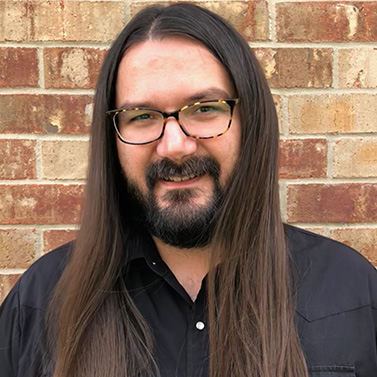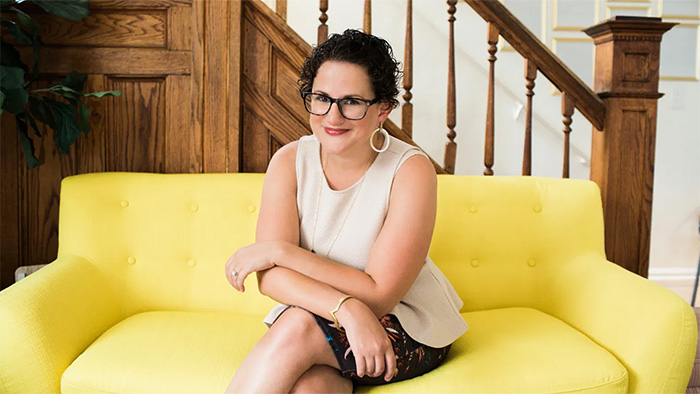
Darren Bogus
Darren Bogus is the Content Editor at Shop LC. Darren is an Applied Jewelry Professional and Pearls Graduate through the Gemological Institute of America.
Table of Contents
Copywriting is both art and science
Simply put, copywriting is both art and science. A skilled copywriter is adept at working within the box – that is to say, working within tight guidelines for an assignment. Often the writer must not only meet certain hard measures, like word count or following a style guide, but they often must adopt a particular brand voice. I’m sure you can imagine that’s a bit harder to measure. Most clients I’ve worked with are “know it when they see it” types. You often have to be prepared to revise several times.
Having spent my career writing and editing a number of different works, I enjoy copywriting for its unique prospects. You must exercise a number of skills not seen in all forms of writing, which provides a fun and exciting challenge.
Science and art as one
As a copywriter, I would “like” to call it simply art, and it may have been a decade or so ago, but in today’s world of information overload and cluttered marketing, it cannot just be associated with the realms of art.
The copywriter's job is not just to engage the reader with my words but also to sell the tool I am talking about. This takes intuition, creativity, and a knack for understanding people. I would call it empathy. My job is to put myself in the shoes of the customer, to understand their need, and then pull the strings of that mind by persuading him or her to make a purchase. This is what makes it art, and one has to be born with the talent of selling to be able to do that.
However, understanding that work, identifying what makes [customers] tick, and influencing the purchase by modifying the variables of my content makes it scientific. Implementing search engine optimization and other such tools to provide discipline to your writing will make copywriting strictly scientific.
Therefore, I believe it is a mix of both science and art as one needs to be innately creative, and with the help of science, a simple copy can become great marketing content.
Dr. Amelia Miller
Kara Hoholik
The art of copywriting
Copywriting is an art, though truthfully, I see science and art as very similar things. While these definitions can be very subjective, I personally believe that art is an expression of feelings and emotions. The art of copywriting tells the story of these feelings through words. Good copywriting evokes emotion. Whether you're writing a social media post, website sales copy, or anything in between, the purpose of copywriting is generally to sell or market your services or products. The best way to sell or market something is to build a relationship with your audience and turn them into loyal customers. Treating copywriting like a science with scripts and formulas to follow removes a lot of the personalization required to build those relationships.
The art lies in how well you can hide the science
Much of the copywriting I complete for my business is data-led and designed through a combination of niche and keyword research. Ultimately, however, the end goal is to write a quality article that will be read by a real human looking for the answer to a specific problem.
For me, the real art is to use that science as a vital bedrock while humanizing the content as best you can. There's nothing wrong with science-led copywriting, but the science should be in the background while the art takes center stage.
John Bedford
John Bedford is the founder of Viva Flavor, a site dedicated to helping amateur cooks explore the world of food and drink.
Nathan Sebastian
Nathan Sebastian is a Content Marketer with GoodFirms, a B2B research and review platform, based out of Washington DC.
Copywriting has become more of a science
Copywriting is all about a creative, fresh, and intuitive approach to the topic in question. But as the role of copywriters evolved, it [became] more and more related to numbers. For instance, in social media marketing, the copywriters are expected to create content that will get the brands a particular number of views, likes, shares, etc. Copywriting has become more of a science with brands considering the team’s performance most of the time on the basis of various marketing metrics. Yes, that has worked for brands, but copywriters cannot work solely for the numbers.
Brands are forgetting that copywriting started out as an art. The creative twist of copywriters on a brand’s products or services is what got them at the forefront of the audience’s attention. Moreover, it is the copywriters’ creative take on the social issues the brands stand for which gets the brands a spotlight on social media. Copywriters understand what will resonate with the audience’s heart. Science cannot do that.
Copywriting will always be an art. Reducing it to just calculations and metrics will not help.
Copywriting as science and art
If we're talking about writing for myself as an expression of my own feelings and views, then I see copywriting as an art. Art, as you know, allows for everything, including an unconventional writer's perspective, intentional mistakes, and the ability to tell readers that they just can't grasp the depth of what I've written.
If we look at copywriting as a working tool for creating marketing copy, psychology plays a leading role. You need to not just express a thought but to ensure that your copy hits all the right marks with your readers (“you/your” words, contractions, bulleted lists, paragraphs, action-oriented language, etc.). This is where copywriting as science comes into play.
Tatiana Gavrilina
Tatiana Gavrilina, Marketing writer at DDI Development with more than 10 years of experience.
Ben Taylor
Ben Taylor, Founder of HomeWorkingClub.com an advice portal for aspiring freelancers.
Art morphing into science
Copywriting should be an art, but it’s increasingly morphing into a science. Search engine optimization is largely to blame for this, and businesses have little option but to jump on board. Those who don’t consider everything from keywords to search intent and buyer psychology risk being left behind. In many ways, it’s a shame things have evolved like this. In a world where everybody is contending with algorithms, the cream doesn’t always rise to the top.
A beautiful piece of artwork
Great copywriting is an art that first captures attention and then drives action. Science, on the other hand, often looks to prove that there is one correct answer to a theory, i.e., “You should write this way for a search engine.” Copywriting, however, is a free and creative expression of an idea or belief through the art of the written word.
Effective copywriting requires deep thought and understanding of the target audience, as well as a clear strategy as to how the copy will hook the reader in and keep them engaged. Through factors such as tone, storytelling, mystery, and more, copywriters, like artists, can combine many elements to create a beautiful piece of artwork that serves its purpose.
Charbel Coorey
Charbel Coorey, Marketing professional, copywriter and blogger at Cricblog.net
Michael Humphreys
Michael Humphreys, Founder & CEO of Z Grills Australia.
With proven formulas
Copywriting is totally different from creative writing. I consider it a science of using specific words to get an expected reaction from a reader. It’s more focused on making someone do or feel something for the benefit of a product, service, or person rather than entertaining and informing.
Of course, writing itself is an art, and without any artistry, a writer will not be able to create a great piece. Still, I feel that copywriting is one of the types of writing that can be easily learned as there’s a formula that anyone can follow and certain rules that one can study.
Copywriting is all art and almost no science
If we applied the scientific method to copywriting for even one week, trial-and-error carnage on Madison Avenue alone would terrorize a generation of liberal arts majors into studying harder in math class. Copywriting is all art and almost no science.
Science starts with a guess at what a story might be about and jumps repeatedly to the end — or a bunch of plausible, but mostly wrong, ends. Thomas Edison famously said of his many scientific attempts to create a lightbulb, “I have not failed. I just found 10,000 ways that won't work.” If he started that way as a copywriter, he would be selling used cars pretty quickly.
Copywriting starts after all the science ends in victory. Copywriting piles that end product onto a flat surface with a mess of adjectives, verbs and adverbs, carving away all the less beautiful pieces until what remains is something ready for showtime.
David Adams
Now for the Stefan Georgi opinion:
Copywriting is both art and science, with proven formulas to follow, a.k.a, my RMBC Method. It’s a game of conversions with the best copywriters generating work that truly resonates with the audience/reader. If you want to write killer copy, you need to spend a lot of time researching (the first step in my RMBC Method) before you ever start writing. That science must be in place before the “art” of copywriting can flow. Then, it’s a matter of positioning the product or service so that the reader understands just how much better off they would be if they had it in their life. If you leave out either the art or the science, your copywriting will suffer, but when they work together, you can create winning copy that drives sales and revenue through the roof.
This is a crowdsourced article. Contributors are not necessarily affiliated with this website and their statements do not necessarily reflect the opinion of this website, other people, businesses, or other contributors.
